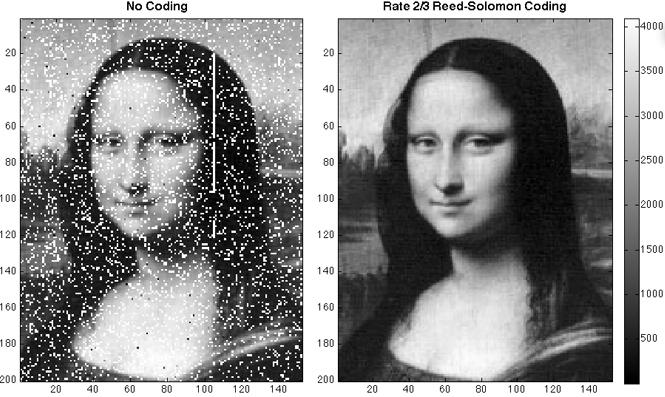NASA scientists have beamed an image of the ‘Mona Lisa’ nearly 240,000 miles to a spacecraft at the moon, making a major breakthrough in laser communication.
The success of the experiment would no doubt would have made Leonardo Da Vinci, the creator of the ‘Mona Lisa’ proud, given the artist was also a renowned scientist and inventor. Maybe it would even have given the portrait’s enigmatic sitter something to smile about.
The exercise is part of the first demonstration of laser communication with a satellite at the moon. The iconic image was beamed from the Next Generation Satellite Laser Ranging station at NASA’s Goddard Space Flight Center in Greenbelt, Maryland in the USA. It arrived at the Lunar Orbiter Laser Altimeter (LOLA) instrument on the Lunar Reconnaissance Orbiter (LRO) spacecraft, which is orbiting the moon.
By transmitting the image piggyback on laser pulses that are routinely sent to track the spacecraft’s position, the team achieved simultaneous laser communication and tracking. “This is the first time anyone has achieved one-way laser communication at planetary distances,” said David Smith of the Massachusetts Institute of Technology. “In the near future, this type of simple laser communication might serve as a backup for the radio communication that satellites use. In the more distant future, it may allow communication at higher data rates than present radio links can provide.”
Typically, satellites that go beyond Earth orbit use radio waves for tracking and communication. The LRO spacecraft is the only satellite in orbit around a body other than Earth to be tracked by laser as well.
“Because [the LRO spacecraft] is already set up to receive laser signals through the LOLA instrument, we had a unique opportunity to demonstrate one-way laser communication with a distant satellite,” said NASA scientist Xiaoli Sun.
Precise timing was the key to transmitting the image. NASA scientists divided the ‘Mona Lisa’ image into an array of 152 pixels by 200 pixels. Every pixel was converted into a shade of grey, represented by a number between zero and 4,095. Each pixel was transmitted by a laser pulse, with the pulse being fired in one of 4,096 possible time slots during a brief time window allotted for laser tracking. The complete image was transmitted at a data rate of approximately 300 bits per second.
The laser pulses were received by the spacecraft’s LOLA instrument, which reconstructed the image based on the arrival times of the laser pulses from Earth. The success of the laser transmission was verified by returning the image to Earth using the spacecraft’s radio telemetry system.
Turbulence in Earth’s atmosphere introduced transmission errors even when the sky was clear. To overcome these effects, NASA scientists the same type of error-correction code used in CDs and DVDs. The experiments also provided statistics on the signal fluctuations due to Earth’s atmosphere.
“This pathfinding achievement sets the stage for the Lunar Laser Communications Demonstration, a high data rate laser-communication demonstrations that will be a central feature of NASA’s next moon mission, the Lunar Atmosphere and Dust Environment Explorer,” said NASA scientist Richard Vondrak.









